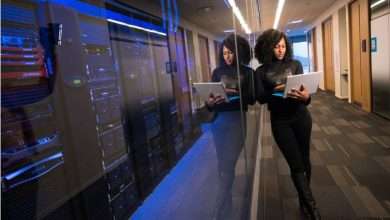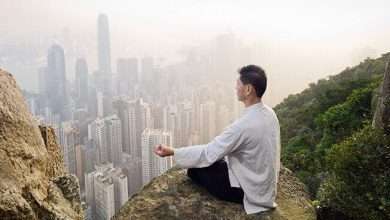Comparing the Top AI Photo Generators in 2025 Using Photo AI

As content creation becomes increasingly visual, artificial intelligence is playing a bigger role than ever in how we generate and edit images. In 2025, photo AI tools will become essential for creators, marketers, designers, and everyday users looking to produce high-quality visuals quickly and affordably. These tools aren’t just automating photo edits – they’re generating entirely new images from scratch, transforming prompts into professional-grade portraits, product shots, and artwork.
With dozens of platforms now offering AI photo generation, it can be overwhelming to figure out which one is right for your needs. In this article, we’ll compare the leading photo AI generators available in 2025, breaking down their strengths, weaknesses, and best use cases to help you choose the ideal option for your creative workflow.
What Makes a Great AI Photo Generator?
Not all photo AI tools are created equal. Some specialize in stylized, artistic imagery, while others focus on realistic facial generation or detailed backgrounds. When comparing the best platforms, here are a few important criteria:
- Image quality: How realistic or visually appealing are the results?
- Control and customization: Can you fine-tune poses, facial expressions, lighting, or styles?
- Ease of use: Is the interface beginner-friendly or better suited for pros?
- Speed: How long does it take to generate or refine an image?
- Commercial rights: Are the outputs licensed for business or commercial use?
With these factors in mind, let’s explore some of the top contenders for 2025.
Top AI Photo Generators of 2025
Photo AI
Photo AI has quickly become one of the most reliable tools for generating realistic portraits, personal brand content, and professional-looking lifestyle images. Designed for ease of use, it allows users to upload selfies or profile photos and generate custom AI headshots, AI portraits, and stylized visuals tailored to specific themes or settings.
It’s particularly popular among influencers, business professionals, and content creators who need clean, authentic-looking images without the cost or logistics of a traditional photo shoot. The outputs are high-resolution, customizable, and optimized for use across platforms like LinkedIn, Instagram, and personal websites.
Midjourney
Known for its high creativity and artistic depth, Midjourney is a favorite among digital artists and concept designers. It uses text prompts to generate stunning, dreamlike images that lean heavily into aesthetics. While not always perfectly realistic, the images are visually captivating and widely used for social media, album art, and storytelling content.
DALL·E 3
Developed by OpenAI, DALL·E 3 delivers strong prompt-to-image accuracy and performs well across a variety of image types. It excels at generating detailed AI photos based on clear prompts and works best for creating original marketing visuals or blog illustrations. However, its photo realism may still fall short compared to some newer platforms focused solely on faces or portraits.
Artbreeder
Artbreeder allows users to blend existing images or manipulate sliders to generate highly customizable AI portraits and avatars. It’s an excellent platform for character creation, visual experimentation, and genetic-style blending of different facial features or aesthetics. While not as fast as prompt-based generators, it offers more granular creative control.
Runway ML
Runway is a robust multimedia platform that goes beyond still images. It allows for high-quality video generation, real-time editing, and facial replacement. Its photo AI capabilities are deeply integrated with its larger creative suite, making it ideal for agencies and advanced content creators who want flexibility across different media formats.
Niche and Emerging Platforms
Some newer AI platforms are targeting specific visual niches, such as digital fashion, body transformation, or virtual modeling. These services appeal to creatives looking for more than just facial generation or portrait styling. Among these, Undress AI has drawn attention for its use in visual simulation – particularly around digital clothing, styling, and body-focused renders that raise both creative opportunities and ethical considerations.
Use Cases by Platform
Here’s a quick breakdown of where each AI photo generator excels:
- Photo AI – Best for lifelike portraits, personal branding, and professional visuals
- Midjourney – Ideal for stylized, surreal, and artistic content
- DALL·E 3 – Great for general-purpose illustration and marketing graphics
- Artbreeder – Perfect for avatars, characters, and experimental design
- Runway ML – Strong choice for creators working across video and image formats
- Undress AI – Frequently cited in conversations around digital body visualization, offering a glimpse into the future of AI-enhanced fashion and personal representation
Trends to Watch in Photo AI
In 2025, photo AI continues to evolve rapidly. Some of the most exciting trends include:
- Increased realism: Tools are getting better at replicating emotional nuance, subtle skin textures, and natural light.
- Cross-platform integration: AI images can now be automatically imported into video, design, or animation platforms.
- More ethical guidelines: As technology matures, platforms are introducing labeling systems, usage restrictions, and clearer licensing terms.
We’re also seeing more experimentation with features like background simulation, pose alteration, and AI clothes remover functionalities. While useful for creative direction and fashion prototyping, professional headshot these features come with a responsibility to use them transparently and respectfully.
Pricing and Licensing Considerations
Most top AI photo generators offer both free and premium plans. Free versions usually come with watermarked outputs, limited generations, or restricted image resolution. Premium plans unlock higher-quality outputs, priority rendering, and commercial usage rights.
Before using any photo AI tool for business, make sure to read the licensing terms. Some platforms restrict the use of generated images for ads or resale, while others offer full rights with proper attribution or subscription.
Conclusion: Choosing the Right Photo AI Generator
With so many options now available, choosing the best photo AI generator depends on your creative needs and intended use. If you need high-quality portraits, Photo AI offers incredible realism and flexibility. For digital artwork or stylized visuals, Midjourney remains a top choice. And if you’re producing multimedia content or working with both images and video, Runway ML is a standout.
As the technology improves, photo AI will only become more central to how we create, share, and monetize visual content. The key is to embrace these tools thoughtfully—balancing creativity with responsibility – and to use AI as a means to enhance, not replace, the human imagination.



